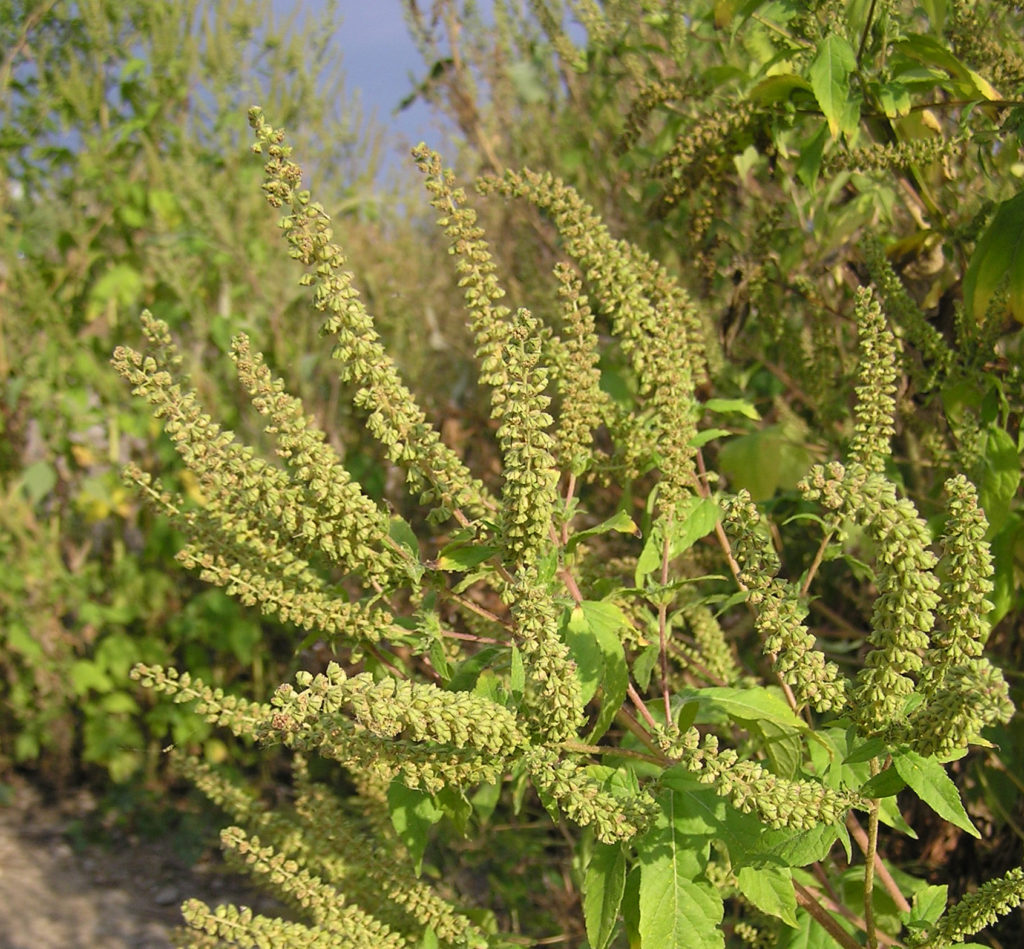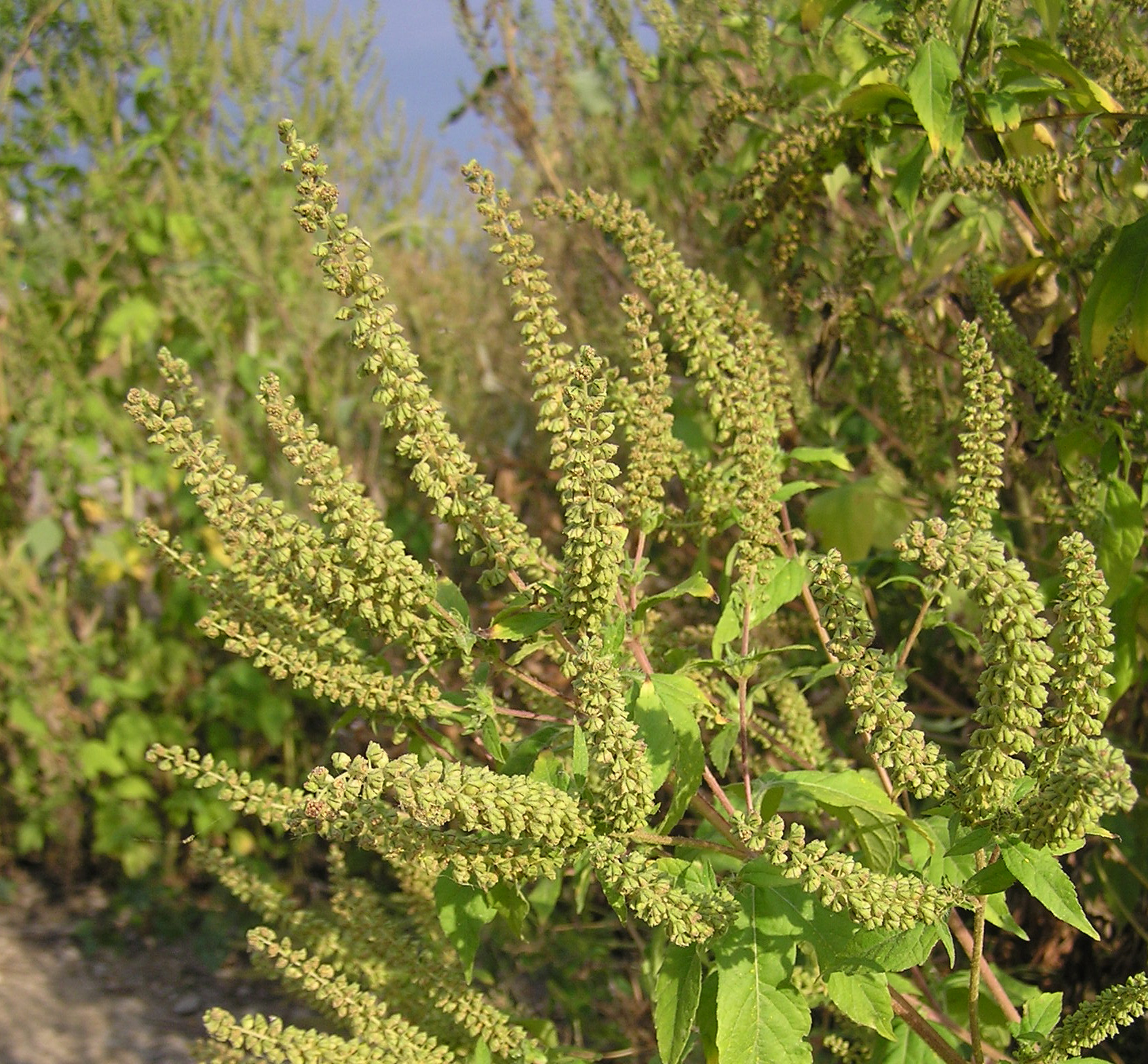By Glenn Ellis

Summer is ending, you’re heading into fall. But you’re still sneezing and sniffling all day and into the night. What’s going on?

Odds are you’re among the 10 percent to 30 percent of Americans who suffer from hay fever, or allergic rhinitis. And most cases of hay fever are caused by an allergy to fall pollen from plants belonging to the genus Ambrosia — more commonly known as ragweed.
Like all allergies, ragweed allergy occurs when the body’s immune system mounts a vigorous response to a foreign substance that is actually harmless – in this case, tiny grains of pollen released by maturing ragweed flowers.
There are at least 17 species of ragweed that grow in North America. The plants are most often found in rural areas and open spaces that get plenty of sunlight. Between the late spring and fall months, ragweed plants release tiny grains of pollen in order to fertilize other ragweed plants.
Depending on the location, ragweed may begin spreading its pollen as early as the last week of July and continue into the middle of October. Its wind-driven pollen can travel hundreds of miles and survive through a mild winter.
Scientists estimate that a single ragweed plant can release one billion grains of pollen over the course of a single ragweed season. And the grains are so light that they float easily even on gentle breezes. Pollen has been detected as far as 400 miles out to sea and up to two miles up in the atmosphere!
The reality is that there is not a corner of the country where there is no ragweed pollen. In most parts of the country, the season used to start in mid-August and run through September.
The fall can be especially difficult for people who are sensitive to mold and ragweed pollen. But these seasonal elements aren’t t the only triggers that can make symptoms worse this time of year. There are also a few lesser known triggers. Here are four things you might not know about fall allergies, courtesy of the American College of Allergy, Asthma and Immunology:
* Hay Fever? – Hay fever, a term from a bygone era, actually has nothing to do with hay. Instead, it’s a general term used to describe the symptoms of late summer allergies. Ragweed is a common cause of hay fever, which is also known as allergic rhinitis. The plant usually begins to pollinate in mid-August and may continue to be a problem until a hard freeze, depending on where you live. See an allergist for prescription medications to control symptoms or to see if allergy shots may be your best option.
* Lingering Warm Weather – While most people enjoy Indian summer, unseasonably warm temperatures can make rhinitis symptoms last longer. Mold spores can also be released when humidity is high, or the weather is dry and windy. Be sure to begin taking medications before your symptoms start. Track your allergy symptoms with MyNasalAllergyJournal.org and visit with your allergist to find relief.
* Leaves – Some folks might find it difficult to keep up with raking leaves throughout the autumn. But for allergy sufferers, raking presents its own problem. It can stir agitating pollen and mold into the air, causing allergy and asthma symptoms. Those with allergies should wear a NIOSH rated N95mask when raking leaves, mowing the lawn and gardening.
* School Allergens – It’s not only seasonal pollen and mold that triggers allergies this time of year. Kids are often exposed to classroom irritants and allergy triggers. These can include chalk dust and classroom pets. Students with food allergies may also be exposed to allergens in the lunch room. Kids with exercise-induced bronchoconstriction (EIB) may experience attacks during recess or gym class. Help your child understand what can trigger their allergies and asthma, and how they can avoid symptoms. Be sure to notify teachers and the school nurse of any emergency medications, such as quick relief inhalers and epinephrine.
No matter the season, it’s important for those who think they may be suffering from allergies or asthma to see a board-certified allergist. An allergist can help you develop a treatment plan, which can include both medication and avoidance techniques.
Having your allergies properly identified and treated will help you and your family enjoy the seasons.
Remember, I’m not a doctor. I just sound like one.
Take good care of yourself and live the best life possible!
The information included in this column is for educational purposes only. It is not intended nor implied to be a substitute for professional medical advice. The reader should always consult his or her healthcare provider to determine the appropriateness of the information for their own situation or if they have any questions regarding a medical condition or treatment plan.
Glenn Ellis, is a Health Advocacy Communications Specialist. He is the author of Which Doctor?, and Information is the Best Medicine. For more good health information, visit: www.glennellis.com





